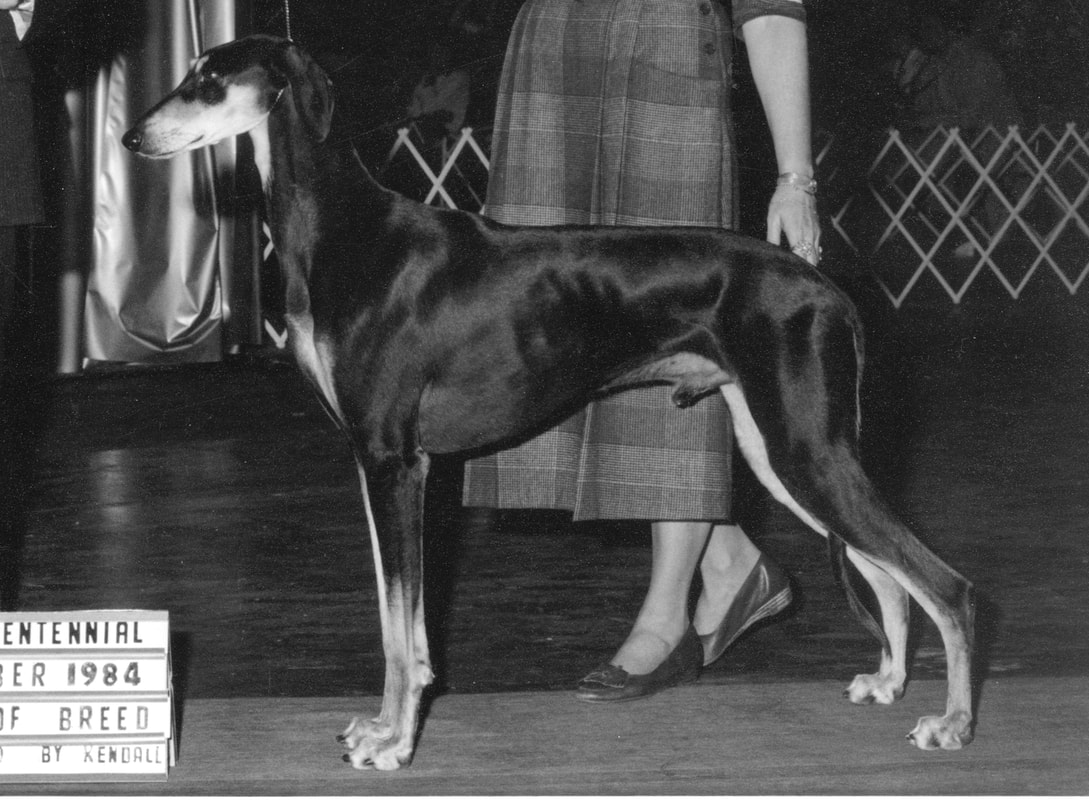|
The saluki is very much a profile breed, clearly distinguished from across the ring by its long neck, slightly arched topline, smooth croup, deep chest and pronounced tuck-up---along with its long legs. A saluki lacking these traits lacks breed type. From the AKC Standard: Neck: Long, supple and well muscled. Loin and Back: Back fairly broad, muscles slightly arched over loin. Chest: Deep and moderately narrow. The neck is long and well-arched, blending smoothly into the withers. Although it usually holds the head high, it should not be perpendicular to the ground nor ewe necked; at the same time it should not be held forward sporting dog style. The withers blend smoothly into the topline. Some salukis have a dip behind the withers created by muscles; while not as aesthetically pleasing it is OK to have. A break behind the withers, with the topline running uphill, is also commonplace but should be faulted. The topline has a slight muscular arch. It should never be straight, and never, ever be swayed! The arch should not be rigid nor extreme. It should hold its shape on the move. The underline is equally important. The chest should reach to the elbow or almost to the elbow---but not beyond. It should extend fairly well back, but not so far as it would interfere with the dog in the contraction phase of the double-suspension gallop. The loin is wide as seen from above, well muscled. From the side there is a pronounced tuck, which is less apparent in males than females. A female without a tuck should be heavily faulted. But give consideration to the fact that she may be in a false pregnancy. The tuck is important as the loin becomes an extension of the hind legs and is instrumental in propelling the dog forward and then contracting to place the rear feet as far forward as possible. In many breeds it is important to be short-coupled. This is not true in the saluki, as again, the loin must be long enough to allow the dog to fold enough for its rear legs to reach forward. The loin and topline are vital parts of the saluki when it comes to running ability; make sure they are strong, arched and flexible. Remember that first of all the saluki is a galloping breed, and that as much as we may like great side movement or well laid-back shoulders, the topline and loin should never be sacrificed for trotting elements. The saluki is a sighthound and must give that immediate impression. |
|
Next: Hindquarters and Tail












